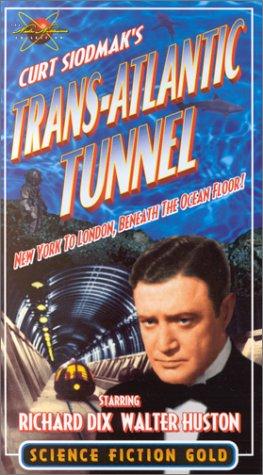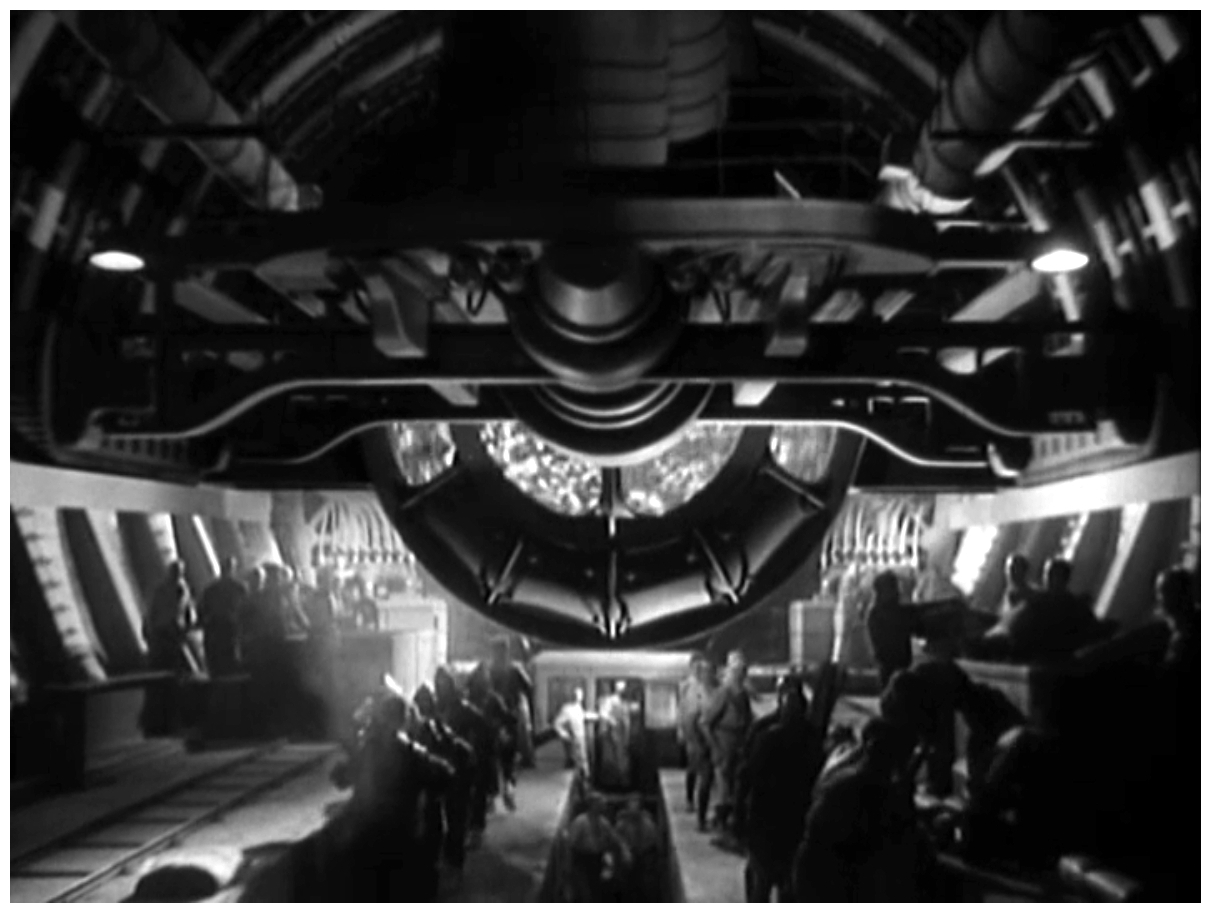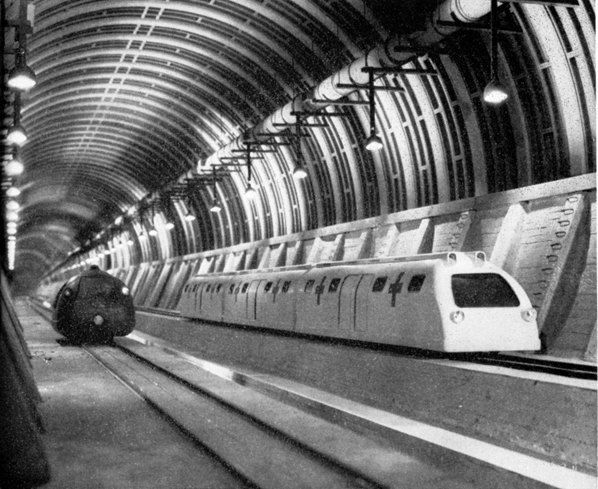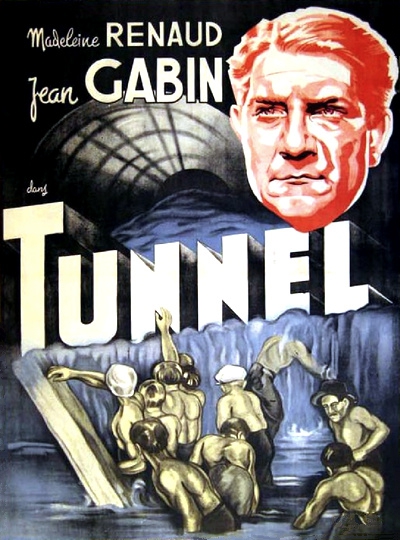‘Completing the Channel Tunnel in 1940….’ are the opening words of this futuristic movie made in the depths of the Great Depression from the typewriter of the then recent German refuge Kurt Siodmak while in England.

Face-time video telephone calls are common. Giant television screens in public squares, on outside walls, in railway stations are the source for news. Aerodynamic designed automobiles glide by. Non-stop transatlantic flights ply the airway from London to New York City and back. (The first non-stop flight on that route occurred in 1958). The face-time calls are also made from the airplane to home. The first passenger train took the Chunnel in 1994. As always Curt was ahead of the times.
The 1940 Channel Tunnel led to the development of a steel that can hold up the universe and a radium drill that churns through all matter and antimatter, too. The investors who paid for the development of those technologies want to see them used again for a return on that investment. The financiers gather to start the trans-Atlantic tunnel. Among them are many wheels within wheels. Some are motivated by philanthropy, others see in the Tunnel greater unity to prevent (another) war (though the Great War is never mentioned explicitly or implicitly). some are there for the likely profit, and then there are the merchants of death who think the tunnel (somehow, and this is never explained) will lead to war and increase demand for the armaments they have to sell.
There are three plot lines, which is three more than in some films reviewed on this blog. First is the Tunnel itself. Second is the personal life and relations of the Chief Engineer on the project. Third are the machinations of the financiers. Without a doubt the Tunnel is the star of the show.
The Tunnel is a gigantic maw that consumes money, labour, tools, lives, men, emotions, patience without end.

The five year project takes twenty. (Mega-engineering forecasts have not improved since then.) Chief is so obsessed by it that he does not notice his son or his wife. Wife tries to share his passion for the Tunnel by going to work as a nurse in it, where she contracts Tunnel disease from the gases and goes blind. Chief does not notice. Now blind (but evidently wealthy) she leaves him with the son. Chief does not notice. The son grows up. The Chief does not notice.
The daughter of one of the philanthropic investors is madly in love with Chief, married or not. Chief does not notice. She throws herself at him repeatedly. Chief does not notice. (This man needs glasses. Look at those assets.)
The financiers buy and sell Tunnel stock to drive others out of the project and Daughter sells her body to the arch villain to secure continued funding for the Tunnel. Chief does not notice.
Accidents, floods, power surges, equipment failure bedevils the project. These the Chief notices. He throw himself even deeper into the work. Workers die. The Chief does not notice. HIs son comes to work in the Tunnel. The Chief does not notice. His son dies in the Tunnel. At last the Chief does notice this, and united by grief he and Wife reconcile.
The Tunnel is vast, on two vertical levels with two way monorail traffic and a two lane road between the monorails.

Nothing like the dual tubes that comprise the Chunnel, which is still losing money. Its investors are still in the red.
Daughter discovers that life with the villain is exciting.
The British Prime Minister and the US President pontificate on the unity of the English-speaking people, though Canada, New Zealand, South Africa, New Zealand, Nigeria, the Bahamas, and Australia are absent from this incantation. Walter Huston does the US President whose pathetic pension meant he had to go to Mexico to find ‘The Treasure of the Sierra Madre’ (1948).
In the end, Chief has to do it himself. He does. End.
It got a laudatory review in the ‘New York Times’ and so it should. The design and staging are striking even today. Siodmak’s futuristic toys outdo ‘Metropolis’ (1926) and its successors like ‘High Treason’ (1929), ‘Just Imagine’ (1930), or ‘Non-Stop New York’ (1937).
The Chief was completely consumed by the Tunnel. How will he live now that it is completed?
It was made at a time when talkies were filmed in three (or more languages) in parallel. The props, costumes, designs sets, and story on the English version were used with a different actors and directors in French, and then again with another cast and crew in German. All this was done quick smart. Doing this led to huge multi-lingual and multi-national production facilities like Gaumont in Paris and UFA in Berlin.
 The French version.
The French version.
These polyglot facilities later opened doors for actors, writers, directors, designers, engineers, cinematographers, and others to move from one country to another after 1933.
From the IMDB, 1 hour 34 minutes at 6.2/10 from 548
Skip to content
